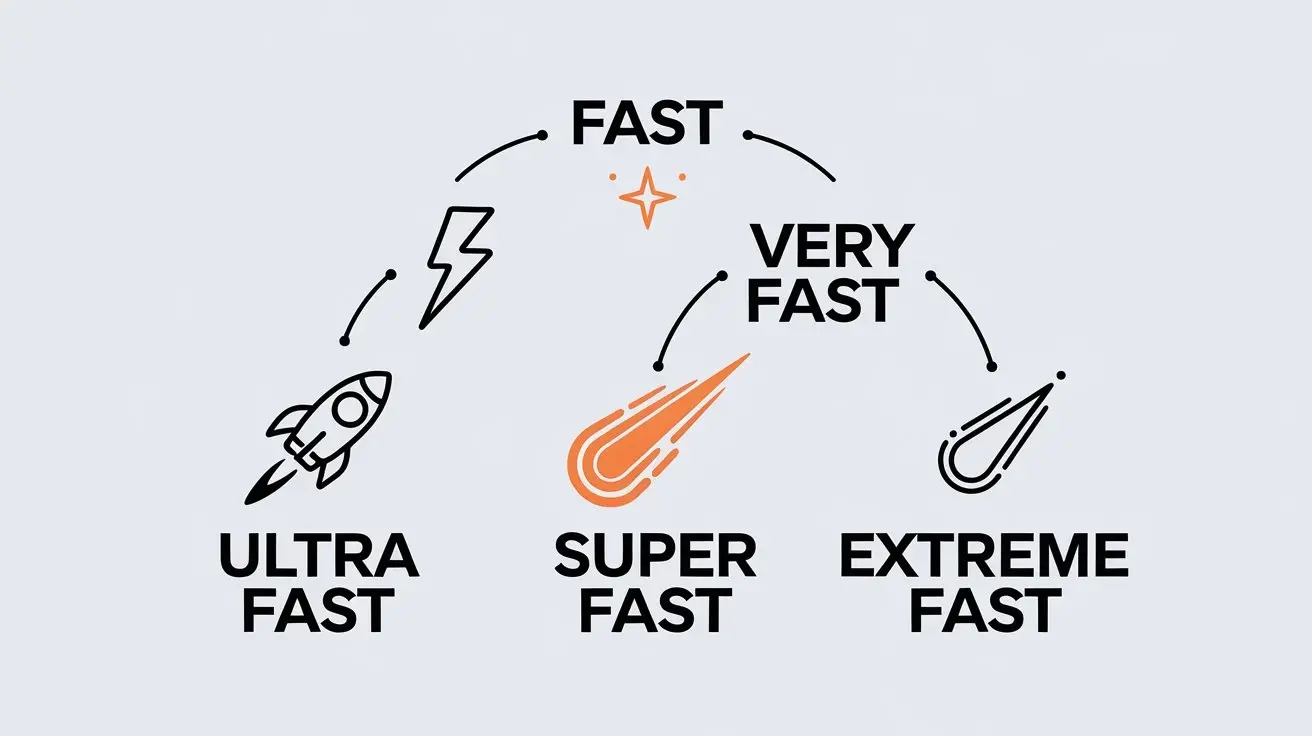Internet Speed Classifications What Is Fast Internet?

The Internet plays an extremely vital role in our everyday lives and due to advancements in technology, the Internet has become a core necessity in our lives. However, what is fast Internet and how various classifications of the Internet are provided below? In this article, imma give you insight into internet speed categories, how to know if you have fast internet and probable ways of optimizing your internet speed.
1. Interpreting Internet Speed Categories
Now let us acquaint ourselves with what fast internet entails and start with the various speed categories. These classifications are in terms of download and upload speeds and assist the users in comprehending the functioning of an Internet connection.
Mbps vs. Gbps
Internet speed is usually measured in itself as Mbps, which means, megabits per second. In other words, one megabit is a unit, comprising one million bits. It is common to find ISPs expressing their speeds in Megabits per second or Mbps to be precise. There is another type of measurement used, which is Gbps, or gigabits per second, which equates to one thousand Mbps. Bear in mind these terms while considering your Internet connection speed.
Broadband vs. Dial-up
BROADBAND INTERNET is a term for high-speed Internet that uses technologies such as Digital Subscriber Line (DSL), cable, fibre optics or wireless means. This technology allows the users to subscribe to the Internet and Internet-based services and make connections at comparatively much higher speeds than the connection offered through a dial-up.
Dial-up internet, on the other hand, is an outdated means that uses telephone lines to connect to the internet. Meanwhile, dial-up connections are slower compared to broadband internet connectivity and may not be as effective for people intending to access videos, play games or download larger files online.
2. The different broadband is a connection type that is normally used in the transmission of digital data in today’s society.
Now that we know the difference between broadband and dial-up, let's take a closer look at the various types of broadband connections and their speed classifications:
DSL (Digital Subscriber Line)
DSL internet connections require the usage of the classic telephone wires to bring Internet access to homes. DSL can be further divided into two categories: ADSL and VDSL. ADSL (Asymmetric Digital Subscriber Line): download speed up to 8 Mbps; uploading speed up to 1 Mbps. VDSL or Very-high-bit-rate Digital Subscriber Line provides much higher speeds with download speeds of up to 100 Mbs and Upstream data transmission speeds of up to 50 Mbs.
Cable Internet
Cable internet connections employ the same cables that is, the coaxial cable, needed to transmit cable television to households. Cable internet has a download speed of up to 1Gbps but this depends on the specific plan offered by the service provider.
Fiber-optic Internet
Fibre internet connections relay data through thin strands of glass utilizing light as the means of transfer. Fibre-optic internet is one of the quickest possible ways of connecting to the internet with a speed of downloading data at a speed of 10 Gbps and uploading data at the speed of 1 Gbps.
Wireless Internet
Mobile internet connections refer to internet connection through handheld devices such as personal computers, smartphones and tablets. The various forms of wireless connections include Wi-Fi and other mobile networks such as 3G, 4G and more recently 5G. Wireless fidelity or Wi-Fi offers wireless access within a coverage area, while the third generation or 3G, 4th generation or 4G, and the fifth generation or 5G offer mobile broadband.
3. What Is Fast Internet?
TBroadbandis defined as fixed internet services with download rates not less than 25 megabytes per second. This makes it support the streaming of high-definition videos and online gaming effectively, as well as the download and uploading of very large files. Free internet fast internet is crucial for the current internet users who use the internet for business, games and social interactions.
4. How to Find Out That You Have Fast Internet
To ascertain that you have fast internet you should consider your downloading and uploading speeds. The Federal Communications Commission commonly known as FCC has defined broadband internet connection as having a speed of at least 25 Mbps for download and 3 Mbps for upload. If you would like to know your internet speed, you can use Speedtest.net or Fast.com. The following websites will challenge your download and upload speeds and you will be in a position to know whether or not your connection qualifies for fast internet.
5. Internet Speed: Some Useful Advice
If you find that your internet speed is slower than you'd like, consider the following tips to improve your connection:
Run a Speed Test
It was explained above that an Internet speed test can help you evaluate your connection speed against your expectations. If you are being throttled to a slower internet speed than what you subscribed for, approach your ISP to check whether your internet connection has any problems.
Update Your Equipment
Old equipment will slow down the internet. Regularly check for firmware updates on your router and even upgrade your router if it’s not powerful enough to handle multiple connections. Also, make sure that the devices are up-to-date with the support of the current wireless standards such as Wi-Fi 6.
Optimize Your Wi-Fi Network
For a better Wi-Fi connection, try using a different frequency that does not interfere with those in nearby houses, and if you have a big house try using a mesh Wi-Fi system. Additionally, you should ensure that the firmware of your router is updated most of the time to enable you to update your router so that you can be able to refresh your network.
Minimize High I/O Operations
Some operations which include, streaming high-quality videos, gaming and file downloading are known to be heavy on bandwidth. If you find your internet speeds decreasing while in these activities then consider avoiding or timing them during offpeak times.
Conclusion
Therefore, it is good to have fast internet, especially in the current technological advancement, where the minimum download speed should be 25 Mbps. Some of the types of Internet connection are DSL, cable, Fiber optic and wireless links which are classified according to speed. Now I will show you some basic guidelines on how to define if you have a fast internet connection or not Based on the results of the speed test, comparing it to the FCC standards. All the tips mentioned in this article should be strictly followed to boost your internet speed and also to have a perfect browsing experience.





